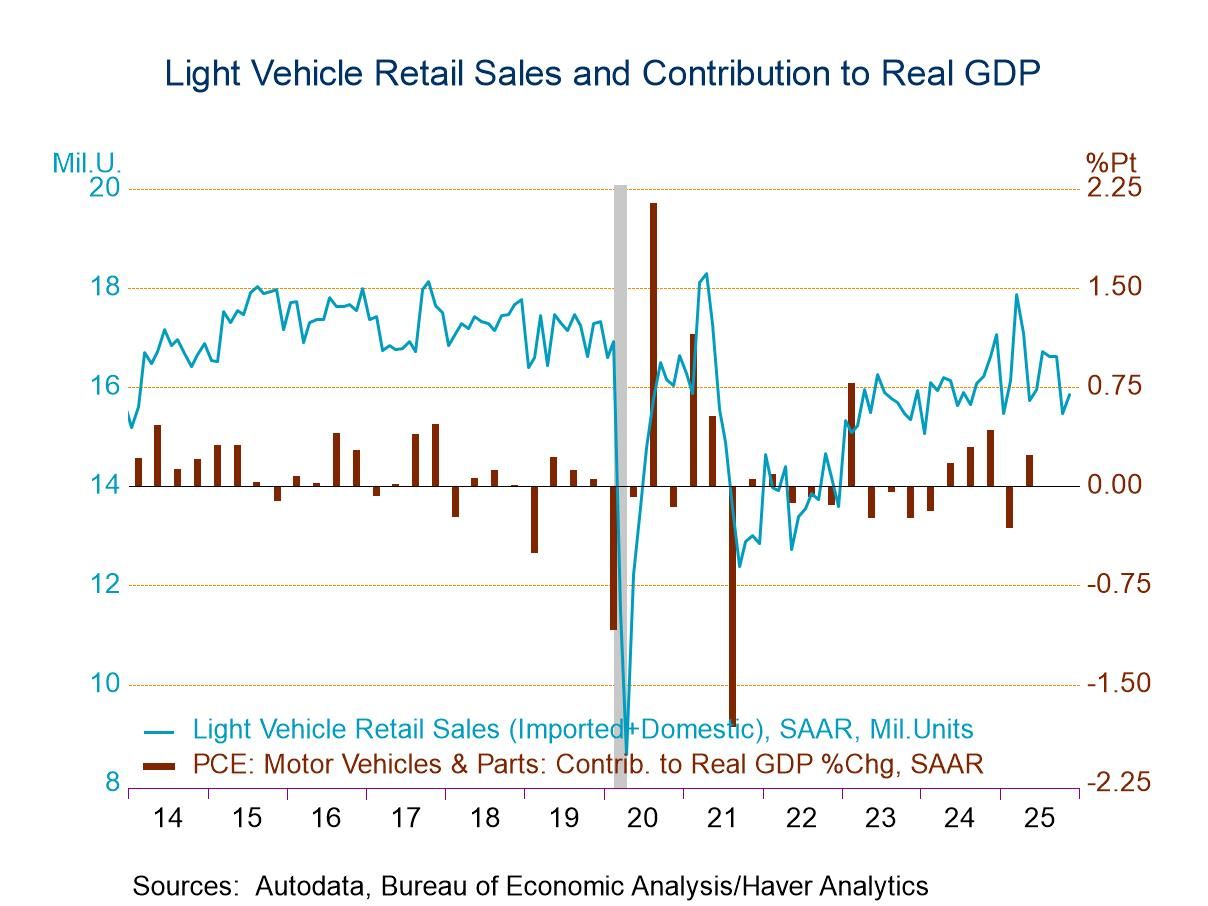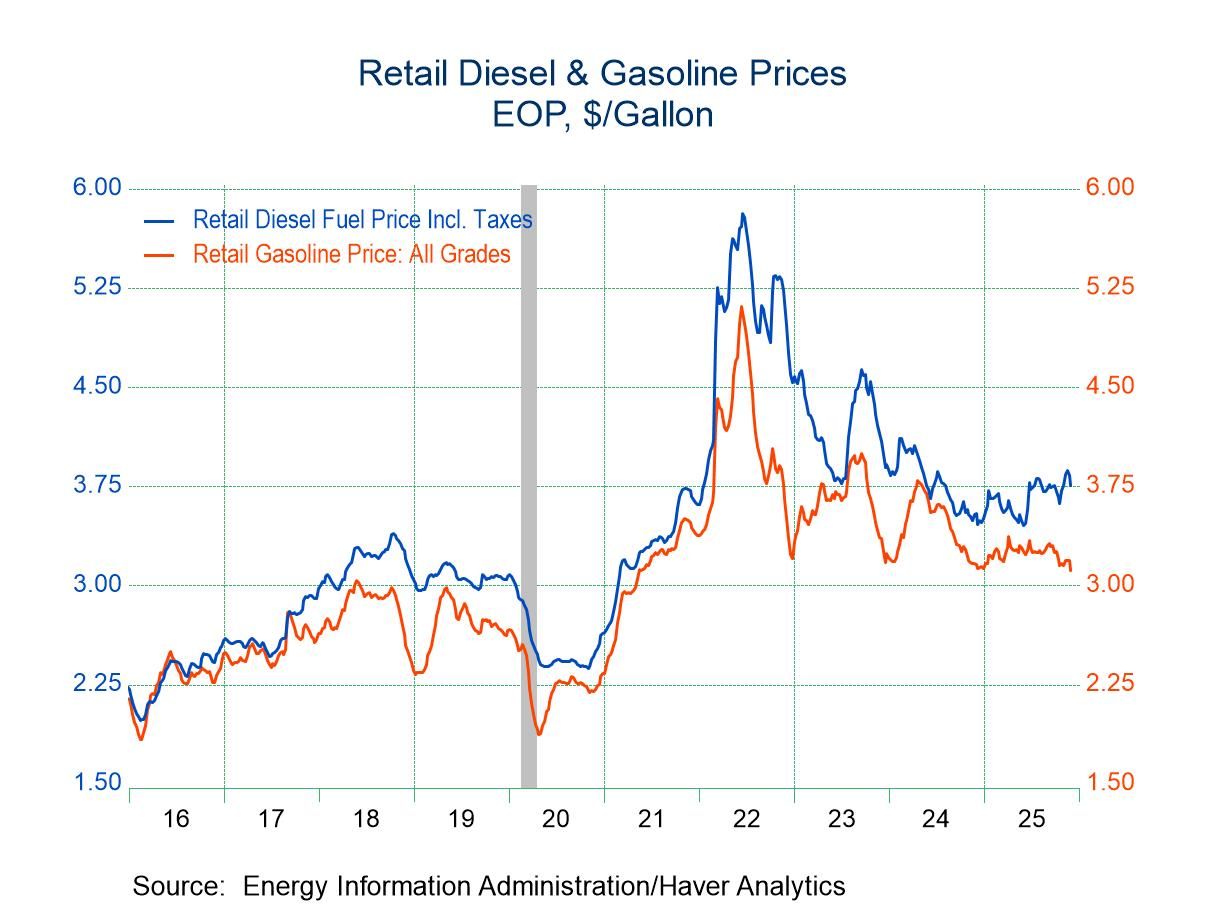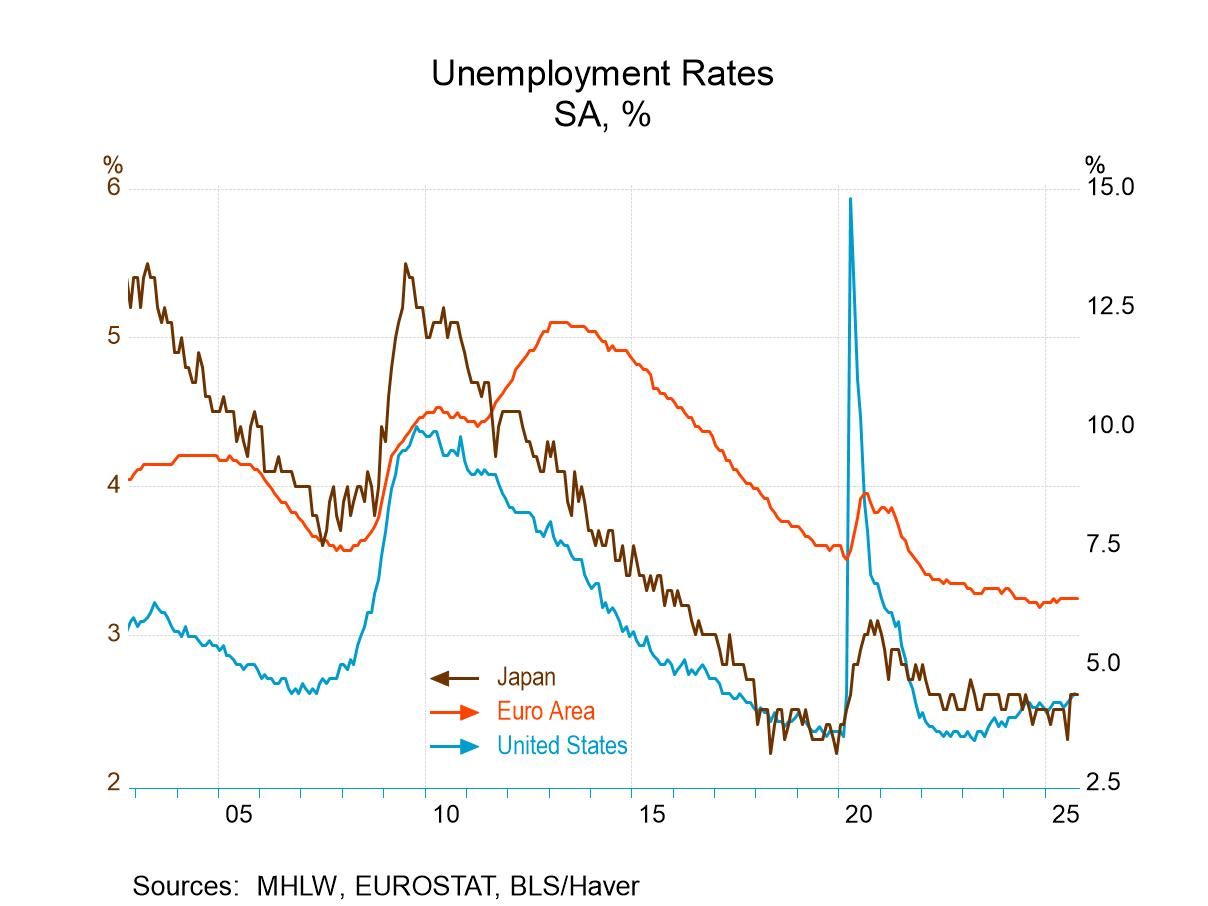Japan’s May Inflation Pressure; Inflation Makes a Second Run at Acceleration

Japan’s inflation measures excluding fresh food are showing significant pressure as the ‘all items ex fresh food’ metric soared at a 5.6% annual rate over 3 months while the measure excluding fresh food & energy rose at 3.7% pace over 3 months. The two gauges also rose by 3.7% and 3.3%, respectively, over a span of 12 months. The performance of the measure excluding fresh food & energy sequentially is plotted in the chart. It shows clear ongoing inflation pressure and acceleration.
This, of course, puts the Bank of Japan in a difficult position. Midyear elections are in prospect and sharp rise in rates could prove politically intrusive. At the same time, Japan’s largest trading partner, China, is struggling and its second largest trading parting, the United States, is embroiled in negotiations with Japan over tariffs. There is a great deal of uncertainty for Japan right now surrounding the policy process and that includes a large dose of geopolitical issues.
At the same time, there has been a kerfuffle in Japan’s bond market in the super-long end as purchaser demand has proved less solid and less stable than it was. The BOJ has had a scheduled taper of its purchases in place, one that the BOJ at its last meeting agreed to reduce in order to retain better demand in the long end of the JGB market. However, Japan does face some uncertain times for policy.
The inflation metrics with fresh food show the strongest growth rates for inflation. A traditional core measure that subtracts all food and energy shows less pressure at only 1.5% over 12 months, compared to core readings of 3.3% and 3.7% for the core measures that subtract out fresh food.
Looking across components, among the eight major categories only two have inflation easing over 12 months compared to 12-months ago; those two are ‘education’ where inflation is - and prices- are falling sharply, and ‘reading and recreation’ where inflation is at 2.9% but lower than it was 12-months ago. Over 6 months, only two of five categories show inflation acceleration (compared to the 12-month pace) and the 3-month annualized inflation across categories shows acceleration in half and deceleration in half compared to the paces over 6 months. Only education shows sequential deceleration – where the fall off is sharp. Only housing shows sequential acceleration, and the ramp up there is more moderate.
QTD (quarter-to-date) Quarter-to-data inflation (May & April over the Q1 average then compounded) shows a headline pace at 2%; ‘all items ex fresh food’ inflation is at a 4.7% pace; ‘all items ex fresh food & energy’ is at 3.3%, while the traditional core ‘excluding all food & energy’ is at 1.4%. So, again, we see on the QTD horizon the measures with fresh food subtracted – the BOJ’s preferred gauges- are showing the most pressure. By component, QTD pressure is lodged in ‘reading & recreation’ and in ‘transportation & communication;’ and ‘housing’ (without subtractions) flies below the 2% target at 1.8%.

Summing up After a very long battle with deflation, Japan has been eager to distance itself from that sinkhole. The BOJ is one of the few global central banks to have worried about its own credibility in public because of its past inability to get up to target speed. No inflation seems present; while it is high in Japanese terms, it has a tempered aspect at the same time as the traditional core demonstrates. The BOJ seems to be looking for the right timing to raise rates as it surveys the policy gauntlet. It is also wary about doing so because of various uncertainties in the global economy that are beyond its control.
Robert Brusca
AuthorMore in Author Profile »Robert A. Brusca is Chief Economist of Fact and Opinion Economics, a consulting firm he founded in Manhattan. He has been an economist on Wall Street for over 25 years. He has visited central banking and large institutional clients in over 30 countries in his career as an economist. Mr. Brusca was a Divisional Research Chief at the Federal Reserve Bank of NY (Chief of the International Financial markets Division), a Fed Watcher at Irving Trust and Chief Economist at Nikko Securities International. He is widely quoted and appears in various media. Mr. Brusca holds an MA and Ph.D. in economics from Michigan State University and a BA in Economics from the University of Michigan. His research pursues his strong interests in non aligned policy economics as well as international economics. FAO Economics’ research targets investors to assist them in making better investment decisions in stocks, bonds and in a variety of international assets. The company does not manage money and has no conflicts in giving economic advice.






